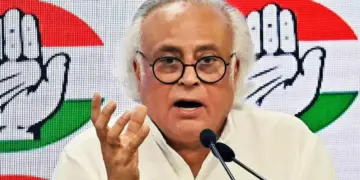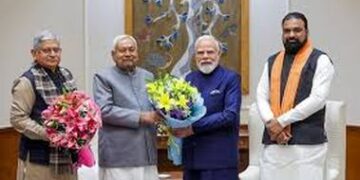New Delhi: Monsoon extremes are likely to increase over India and South Asia, while the frequency of short intense rainy days are expected to rise, an IPCC report on climate change said on Monday.
Models also indicate a “lengthening of the monsoon” over India by the end of the 21st century, with the South Asian Monsoon precipitation projected to increase, said the Sixth Assessment Report of the IPCC, approved by 195 member countries.
Rainfalls, floods and droughts will also increase, R Krishnan, Executive Director, Centre for Climate Change Research (CCCR), Indian Institute of Tropical Research and one of the co-authors of the report said.
Droughts will occur more because soil will lose moisture. Due to an increase in temperature, there will be more water evaporation, which will in turn decrease soil moisture and lead to droughts, he said.
“Experiments with constant forcing indicate that at 1.5 degrees and 2 degrees Celsius global warming levels, mean precipitation and monsoon extremes are projected to intensify in summer over India and South Asia,” the report said.
“CMIP5 models project an increase in short intense active days and decrease in long active days, with no significant change in the number of break spells for India,” the report said.
Krishnan added that extreme weather events have been on the rise since the last 50-60 years but with higher levels of global warming it is going to get even stronger.
“The number of rainy days may decrease, but then when heavy rains occur they will happen in short spells. So the frequency of heavy rainfall events are expected to increase,” he said.
The finding assumes significance considering that South Asia which includes India are one of the densely populated regions in the world. The economy in this region is largely driven by the Southwest Monsoon.
Swapna Palickal, one of the authors of the report, said with warming, it was assessed that monsoon precipitation or South Asian Monsoon precipitation has decreased during the middle of the 20th century, which is mostly caused by the aerosol induced aerosol forcing.
“In the near term of 20-30 years, we aren’t seeing much increase in the rainfall beyond the internal variability change, but both annual as well as the summer monsoon precipitation will increase by the end of the 21st century,” added Palikal who is also a scientist with the IITM.
She pointed out that El Nino associated rainfall variability will increase. Extreme Indian Ocean Dipole events are projects to increase.
El Nino is associated with heating of Pacific waters and La Nina is linked to cooling of the Pacific waters. A positive IOD is associated with cooling of the Indian Ocean waters and negative IOD is linked to its heating. These factors influence the Southwest Monsoon.
The report states that there has been a new evidence of the effect of local land use and land cover change on heavy precipitation.
There is a growing set of literature linking increases in heavy precipitation in urban centres to urbanisation.
Urbanisation intensifies extreme precipitation, especially in the afternoon and early evening, over the urban area and its downwind region, the report said.
India has been witnessing rapid urbanisation over the last few decades.
“Urbanisation is going to intensify heat extremes. It can also lead to heavy precipitation and flooding. The run-off and flooding will increase,” Krishnan said. PTI






